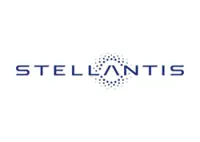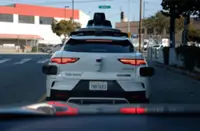A Waymo autonomous vehicle drives on Columbus Avenue in San Francisco, California, on Aug 16, 2023, one week after a state agency gave both Cruise and Ways the green light to begin accepting paid customers. — Bay Area News Group/TNS
The controversial Bay Area experiment in robot-driven taxi service will expand from San Francisco to much of the Peninsula if Google-spinoff Waymo’s application to state authorities succeeds – but it is already running into opposition.
Waymo on Jan 19 submitted its proposal to the California Public Utilities Commission (CPUC), which along with the California Department of Motor Vehicles (DMV) regulates autonomous taxis in the state. The commission made a divisive decision in August to greenlight robotaxi service with paid fares in San Francisco, leading to roadway mayhem and a dramatic injury accident.
Waymo’s proposal, submitted eight days after it received DMV approval to expand to the Peninsula, includes an operating area from San Francisco southward to include Sunnyvale, with the western boundary running along Highway 280 and the eastern boundary mostly along the Bay.
“Why would any city or county allow robotaxis to operate unfettered when they are proven to be disruptive to first responders and even deadly?” said David Canepa, vice-president of the San Mateo County Board of Supervisors. “What is needed is local control and not the blanket approval the DMV and CPUC has taken.”
Canepa’s objection underscores a bitter dispute between state and local authorities over who gets to decide where robotaxis operate. Earlier this month, California state Sen. Dave Cortese, a San Jose Democrat, introduced Senate Bill 915, which would transfer the power to grant permits for robotaxi operations to local governments, and allow them to enact new local ordinances regulating them.
Waymo said in its proposal that the DMV has approved its robotaxis for use day and night on freeways and highways with speed limits up to 65 miles per hour, along with city streets, rural roads, other roadways and parking lots. The vehicles – currently electric Jaguar I-PACE SUVs – would be eligible to operate in rain or fog, but not snow, according to Waymo.
Carnegie Mellon University engineering professor Phil Koopman, who studies the technology, said Waymo has a track record of expanding its robotaxi operations gradually, but he remains concerned about the vehicles operating at highway speeds. “If there is a crash, when you’re above about 30 to 35 miles per hour, the chance of fatality rises dramatically,” Koopman said.
San Francisco’s robotaxi experience has been marked with controversy, with city and emergency officials complaining that the vehicles snarled traffic and blocked emergency responders. Most of the official ire was directed at General Motors’ Cruise. In October, after a Cruise robotaxi hit and dragged an injured pedestrian, the DMV shut down Cruise’s operations in San Francisco. Uber in 2018 suspended testing of its self-driving cars after one killed a pedestrian in Arizona.
Waymo continues to operate about 100 robotaxis in San Francisco. Its expansion proposal said it is providing “tens of thousands of fared rides per week to members of the public in San Francisco” and “free rides in the Los Angeles area on a smaller scale.”
San Francisco city data indicates that of about 80 incidents of robotaxis interfering with first responders, Cruise was responsible for two-thirds and Waymo for one-third, said Aaron Peskin, president of the San Francisco Board of Supervisors. “It’s safe to say that Waymo’s record isn’t spotless,” Peskin said.
Waymo did not respond to questions Thursday from this news organisation, including about its ability to ensure public safety. The company, which Google spun off from its experimental “moonshots” unit in 2016, said in its proposal that safety is at the core of its mission. The company said in the proposal it has provided more than a million driverless rides to passengers in California and Phoenix, and was “excited ... to bring our transformative technology and service to more Californians.”
Koopman noted that while Waymo said in a December report that its robotaxis had “a significant reduction in the rates of police-reported and injury-causing crashes compared to human drivers” in cities where it operates, it also acknowledged that its seven million driverless miles were not sufficient to determine whether the technology reduced severe injuries and fatalities when compared to human drivers.
While Waymo’s map includes San Francisco International Airport, airport officials said Wednesday they had “not approved any activity at SFO”. Officials have had discussions with the company, and want “to see Waymo complete further development in communities around the airport to ensure this mode of transit could safely and effectively serve passengers’ transportation needs to a variety of destinations,” SFO spokesman Doug Yakel said.
Peskin said he has made clear to robotaxi companies that San Francisco supervisors could vote to bar them from the airport. “I am using that as an incentive or leverage to have the industry work more collaboratively with local governments,” Peskin said.
Daly City Mayor Juslyn Manalo said cities “must have the ability to chime in and decide on policy that affects our local residents and workers on the road and streets”.
UC Berkeley professor of civil and environmental engineering Scott Moura said national standards enforced by a federal agency would be a better solution than a patchwork of local rules. But if Cortese’s bill passes, it might push the DMV or utilities commission to create a division “more active and perhaps more strict” in regulating the vehicles, which could satisfy local authorities, Moura said.
Anyone can file objections with the utilities commission to Waymo’s expansion proposal for 20 days following the Jan 19 filing date. Approval or denial of the proposal at the utilities commission could come in weeks or months, depending on staff assessments of the expansion and any objections, the commission said. – The Mercury News/Tribune News Service





